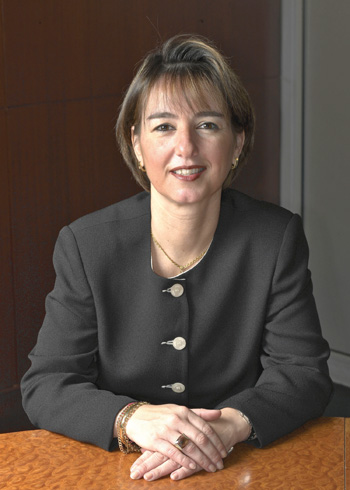Moretti, who was named president of Delphi Product & Service Solutions in mid-2011, began her In this interview, she talks about her global background as well as the telematics pilot program DPSS launched with WDs last year. automotive career at a Delphi Joint Venture in Brazil (DHB) in 1989. She held several positions in sales, marketing and business planning in the original equipment business and then joined Delphi Product & Service Solutions in 2001 as director of aftermarket, South America. In this role, Moretti led the creation of the DPSS business and launch of the new brand. She moved to DPSS headquarters in Troy, Mich., in 2003 to become director of marketing for DPSS. In this role she helped create Delphi’s global processes and portfolio for the independent aftermarket. Educated in Brazil, Moretti holds a bachelor’s degree in liberal arts, a master’s degree in human resources and an MBA in marketing. Moretti is fluent in multiple languages, including Portuguese, English, French and Spanish.
automotive career at a Delphi Joint Venture in Brazil (DHB) in 1989. She held several positions in sales, marketing and business planning in the original equipment business and then joined Delphi Product & Service Solutions in 2001 as director of aftermarket, South America. In this role, Moretti led the creation of the DPSS business and launch of the new brand. She moved to DPSS headquarters in Troy, Mich., in 2003 to become director of marketing for DPSS. In this role she helped create Delphi’s global processes and portfolio for the independent aftermarket. Educated in Brazil, Moretti holds a bachelor’s degree in liberal arts, a master’s degree in human resources and an MBA in marketing. Moretti is fluent in multiple languages, including Portuguese, English, French and Spanish.
The North American aftermarket is very different from the aftermarket in Brazil or Europe. What advantages do you feel your global background will provide in your approach to the North American market?
I believe you start to understand the benefit of being a global company. As you manage globally, you see the diverse car parc we supply parts for, but interestingly the more global you become, the more you start to see the world become small. For example, you speak with customers on the West Coast in the U.S. and think we could possibly offer parts we have in Europe for the import car parc in the U.S. You begin seeing opportunities and how you can interchange with the different regions.
Another thing I’ve learned is there is no single business model. As you visit developing countries in Eastern Europe, South America or even Asia Pacific, you see different business models. They will continue to evolve as their markets mature. In the U.S., I see an advanced business model compared to other regions in the world. It’s an interesting process and position to be in after having the opportunity to lead three of the four regions of the world. It’s almost like a gift.
Please tell us more about the pilot telematics program that Delphi has launched with warehouse distributors.
We have a new telematics device, which we launched at AAPEX in November 2011. It has more processing power and gathers twice the data from the vehicle than the original. With today’s modern vehicles and the sensing technology, we know tire pressure, fluid levels, the age of the oil – or oil life monitoring – there is a lot of information we can pull from the vehicle. Telematics is an excellent solution to managing preventative maintenance on a vehicle. As this model is introduced to the market and evolves, I think it will be seen by shops as a growth opportunity that will help them take some of the $62 billion of lost opportunity in unperformed maintenance.
Telematics not only helps improve vehicle performance and safety, but can contribute to driving the parts business. For the vehicle owner, it helps provide peace of mind. For example, if their car breaks down, our telematics device can instantly read from the vehicle data what’s wrong and determine how to fix it. In many cases, we can get in touch with the customer and let them know if it’s ok to drive the vehicle or if it should be towed. We can pinpoint their exact location and, if needed, disable the vehicle. We can communicate if they need to bring the vehicle in immediately or with their next scheduled maintenance.
You can also employ our telematics business model for fleet management. Many of our customers have thousands of vehicles delivering parts every day. It’s an enormous expense in terms of fuel and vehicle maintenance. We can bring a level of sophistication and planning that will help make them more efficient.







